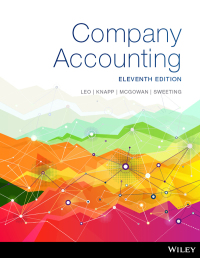

Patel and Sons Inc. uses a standard cost system to apply factory overhead costs to units produced. Practical capacity for the plant is defined as 55,200 machine hours per year, which represents 27,600 units of output. Annual budgeted fixed factory overhead costs are $276,000 and the budgeted variable factory overhead cost rate is $3.70 per unit. Factory overhead costs are applied on the basis of standard machine hours allowed for units produced. Budgeted and actual output for the year was 21,500 units, which took 44,200 machine hours. Actual fixed factory overhead costs for the year amounted to $264,800 while the actual variable overhead cost per unit was $3.60. Based on the information provided above, provide an appropriate end-of-year closing entry for each of the following two independent situations: (a) the net factory overhead cost variance is closed entirely to Cost of Goods Sold (CSG), and (b) the net factory overhead variance is allocated among WIP Inventory, Finished Goods Inventory, and CGS using the following percentages: 10%, 20%, and 70%, respectively. (Do not round intermediate calculations. Round your final answers to nearest whole dollar amount. If no entry is required for a transaction/event, select "No journal entry required" in the first account field.) View transaction list Journal entry worksheet Record the net variance closed to cost of goods sold. Note: Enter debits before credits. Transaction General Journal Debit Credit Patel and Sons Inc. uses a standard cost system to apply factory overhead costs to units produced. Practical capacity for the plant is defined as 55,200 machine hours per year, which represents 27,600 units of output. Annual budgeted fixed factory overhead costs are $276,000 and the budgeted variable factory overhead cost rate is $3.70 per unit. Factory overhead costs are applied on the basis of standard machine hours allowed for units produced. Budgeted and actual output for the year was 21,500 units, which took 44,200 machine hours. Actual fixed factory overhead costs for the year amounted to $264,800 while the actual variable overhead cost per unit was $3.60. Based on the information provided above, provide an appropriate end-of-year closing entry for each of the following two independent situations: (a) the net factory overhead cost variance is closed entirely to Cost of Goods Sold (CSG), and (b) the net factory overhead variance is allocated among WIP Inventory, Finished Goods Inventory, and CGS using the following percentages: 10%, 20%, and 70%, respectively. (Do not round intermediate calculations. Round your final answers to nearest whole dollar amount. If no entry is required for a transaction/event, select "No journal entry required" in the first account field.) View transaction list Journal entry worksheet Record the net variance allocated to ending inventories and Cost of goods sold. Note: Enter debits before credits Transaction General Journal Debit Credit b








